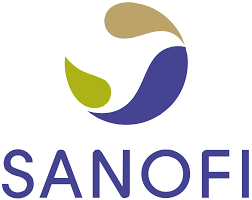Sanofi reveals new plan to drive innovation and growth
December 10, 2019 | Tuesday | News
Accelerate R&D focus on six potentially transformative medicines
At Sanofi’s Capital Markets Day tomorrow with the financial community, the company will provide details of a new strategic framework with four key priorities to drive innovation and growth. Sanofi will also discuss the alignment of the organization to support this new strategy.
Sanofi Chief Executive Officer Paul Hudson and Executive Committee members will provide a detailed overview of the company’s strategy based on four main priorities – focusing the portfolio, leading with science, accelerating efficiency, and reinventing how the company works.
“Our new strategy positions Sanofi to achieve breakthroughs with our most promising medicines, addressing significant patient needs. We will anchor our efforts in leading-edge science with clearer priorities and a focus on delivering results,” said Hudson. “Sanofi gained leadership and changed the practice of medicine in diabetes and cardiovascular diseases. We are now preparing for our next cycle, with a new round of innovative solutions for patients. I’m confident we will achieve long-term growth and value for shareholders while turning innovation into transformative medicines for patients.”
Focus on growth
- Dupixent® (dupilumab)2 – Sanofi expects to deliver strong growth for Dupixent with the ambition of achieving more than €10 billion in peak sales driven by its unique mechanism of action targeting the type 2 inflammation pathway.
- Vaccines – Vaccines are expected to deliver a mid-to-high single-digit net sales CAGR from 2018 to 2025, through differentiated products, market expansion and new launches.
- Pipeline – The company has identified and prioritized six potentially transformative therapies.
Additional core drivers include treatments for oncology, hematology, rare diseases, neurology, and Sanofi’s strong presence in China.
Lead with innovation
Sanofi has six potentially practice changing therapies in areas of high unmet patient need. These investigational therapies are listed as follows in order of planned submission timing:
- Fitusiran is an RNAi therapeutic in development for the treatment of hemophilia A and B with or without inhibitors with the potential to provide once-monthly dosing convenience.
- BIVV0013 is a factor VIII therapy designed to extend protection from bleeds with prophylaxis dosing of once weekly for people with hemophilia A that seek to enjoy a normalized lifestyle.
- Venglustat is an oral therapy in development for several rare diseases in the category of lysosomal storage disorders (Gaucher type 3, Fabry, Tay-Sachs disease, etc.), and also showing promise for more common disorders including autosomal dominant polycystic kidney disease and some sub-types of Parkinson’s disease.
- SERD (‘859) is a selective estrogen receptor degrader which aims to be the new standard of care in hormone-receptor-positive breast cancer.
- Nirsevimab4 is a potentially cost-effective prevention against respiratory syncytial virus, with initial focus on protecting infants.
- BTKi (‘168)5 is an oral medicine for multiple sclerosis with potential to be the first disease-modifying therapy to address inflammation and disability drivers in the brain.
The company also announced plans to acquire Synthorx, Inc. which will bolster its immuno-oncology (IO) pipeline with both a proprietary IO platform synergistic with Sanofi’s existing therapeutics platforms, and a lead IO candidate (THOR-707) being explored across multiple solid tumor types both alone and in combination with immune checkpoint inhibitors and other future IO combinations.
Sanofi plans to hold a R&D Day in 2020 to provide a detailed review of its R&D portfolio of candidate medicines, strategy, and specifically productivity.
Accelerate efficiency
Sanofi expects to expand its business operating income (BOI) margin1 to 30% by 2022, with an ambition for its BOI margin to exceed 32% by 2025. The company is also announcing efficiency initiatives that are expected to generate €2 billion savings by 2022. These savings will fund investment in its key growth drivers and accelerate priority pipeline projects as well as support the expansion of the BOI margin.
The efficiency savings are expected to result primarily from limiting spend on de-prioritized businesses, from smart spending (procurement) initiatives and from operational excellence in manufacturing and organizational productivity. Regarding de-prioritized businesses, Sanofi is announcing a discontinuation of research in diabetes and cardiovascular (DCV) and will not pursue plans to launch efpeglenatide6. The company will also optimize the commercial model for DCV and rheumatoid arthritis, including right-sizing the resources deployed behind Praluent® (alirocumab)2 and Kevzara® (sarilumab)2.
Reinventing how we work
Sanofi will be structured with three core global business units to support the company’s strategy7 – Speciality Care (immunology, rare diseases, rare blood disorders, neurology and oncology), Vaccines, and General Medicines (diabetes, cardiovascular, and established products). Consumer Healthcare will be a standalone business unit with integrated R&D and manufacturing functions.
Hudson explained, “Our objective for the Consumer Healthcare business is to unlock value and entrepreneurial energy by growing faster than the market over mid-term. We believe the new standalone structure, coupled with plans to accelerate the over-the-counter switches for Cialis® and Tamiflu®, will position the business well to accomplish this ambition.”
Focused capital allocation
Sanofi expects to increase its annual Free Cash Flow by approximately 50% by 2022 compared with an adjusted base of €4.1bn in 2018.8
Sanofi continues its focused and disciplined capital allocation policy. It expects to deploy cash generated from its three core GBUs as well as the standalone CHC business with the following order of preference:
- Organic investment
- Business Development and M&A activities, focusing on bolt-on, value-enhancing opportunities to drive scientific and commercial leadership in core therapeutic areas
- Growing the annual dividend
- Anti-dilutive share buybacks
Additionally, Sanofi has the potential to raise capital through asset disposals, including streamlining “tail” brands in its Established Products business, and by monetizing its stake after the expiry of the lock-up under the amended and restated investor agreement with Regeneron.










